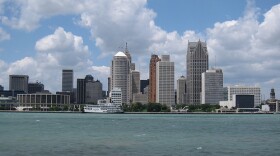New numbers from the U.S. Census Bureau show Detroit hasn’t quite yet reversed decades of population loss, but it seems to be getting close.
The Census has Detroit down another 3,541 residents in mid-2016 from the same time a year before. That leaves a total population of 672,795.
That’s a very small drop compared what the city has seen in the past.
Still, many people had hoped this would be the year Detroit finally showed some gains.
Kurt Metzger, founder of Data Driven Detroit, had thought so. He thinks these Census numbers may have overstated this latest loss.
Still, Metzger is confident that next year will be the year things finally turn around.
He says there are new housing developments just coming online in Detroit, and the city is definitely attracting new residents in certain areas. But the city has also kept a core low-income population (40% of Detroiters live below the poverty line) that has nowhere else to go.
“So you have a certain population in the city that’s pretty much stuck. You know, we have this city that’s almost two cities,” Metzger said.
Metzger expects Detroit will continue to gain residents for the foreseeable future. But he says no one should expect a major population boom any time soon, because of who’s likely to grab up the new housing.
“It’s not your typical 2.7 persons in a household,” Metzger said. “It’s usually singles, maybe it’s a couple, generally not with kids.”
Detroit Mayor Mike Duggan, who’s seeking re-election this year, has made reversing population loss a key benchmark for his administration.
Duggan’s Chief of Staff Alexis Wiley pointed out that this is the smallest population decline the city has seen in decades. She told the Detroit News that the data estimates from mid-2016 are nearly a year old, and that things are “trending in the right direction.”
Metzger says the picture throughout Metro Detroit is uneven. Some inner- and outer-ring suburbs are adding residents, while others, particularly in Wayne County, continue to decline.
But the big winners are elsewhere in the state, with Ann Arbor, Grand Rapids and Lansing adding the most residents. Overall, Michigan posted a tiny 0.1% population increase during the same period.






